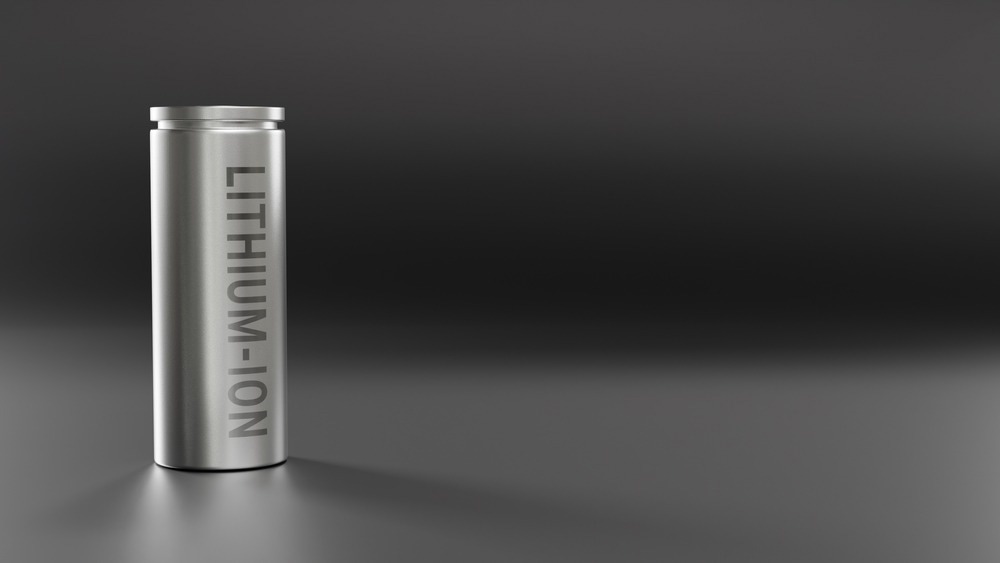A team of scientists from Pakistan, Ireland, Saudi Arabia, and South Korea has published a new paper on the usefulness of TiC MXene (titanium carbide MXene) cathodes in proposed lithium-air batteries. Their research has appeared online in the journal ACS Applied Energy Materials.

Study: Recent Advances in Titanium Carbide MXene (Ti3C2Tx) Cathode Material for Lithium–Air Battery. Image Credit: Black_Kira/Shutterstock.com
Metal-air Batteries – An Efficient and Reliable Green Energy Storage Solution?
The world is transitioning to a post-fossil fuel zero-carbon economy as the effects of population growth, anthropogenic climate change, and the awareness of dwindling petrochemical resources are becoming more widely known. Meeting future energy demands whilst phasing out fossil fuels requires intense research in the field of renewable energy generation and storage.
Renewable energy sources such as solar, wind, biomass, and hydropower have seen increasing use, with renewables contributing steadily more to national energy mixes. However, renewable energy generation alone is insufficient, as power generation can fluctuate depending on seasonality and climactic conditions. Reliable and efficient energy storage solutions are needed.
Several innovative technologies have been developed in recent decades, with fuel cells, supercapacitors, and batteries emerging as the forerunners in green and sustainable energy storage research. To be suitable for storage, devices must have sufficient properties such as high power and energy densities.
Lithium-ion batteries have emerged as a key energy storage solution, with the electric vehicle industry, in particular, making use of this technology. However, lithium-ion batteries are somewhat limited by energy density issues compared to gasoline.
To overcome this issue, research has turned to alternative battery technologies. Recently, metal-air batteries, including lithium-air, zinc-air, aluminum-air, and sodium-air batteries, have garnered research interest due to their comparatively high energy densities. Lithium-air batteries have displayed the highest energy density out of these battery variants and have therefore been the most widely studied.
The energy density of lithium-air batteries is almost tenfold higher than the energy density of conventional lithium-ion batteries and comparable to gasoline, at around 3457 Wh kg-1. However, there are still some key technical challenges to overcome with these batteries, mainly related to their air cathodes. Improving these cathodes can lead to enhanced battery performance.
The Study
Several researchers have already explored some alternative advanced materials such as carbon nanotubes, graphene, chalcogenides, and transition metal oxides as cathodes in these batteries. However, the results of these studies have been far from satisfactory.
The new paper in the journal ACS Applied Energy Materials has investigated the suitability of MXenes as materials for this critical metal-air battery component. To the author’s knowledge, MXene cathodes have not been successfully employed as cathodes in lithium-air and other metal-air batteries thus far, although there have been advances in theoretical studies.
Titanium carbide (TiC) MXenes were evaluated for their use as lithium-air battery cathodes. The authors have reviewed multiple advances and aspects of TiC MXenes for this application, including current applications and research, a comparison of these materials and alternative candidates, their synthesis and properties, and compatibility with other lithium-air battery components such as anodes, redox mediators and separators, and electrolytes.
Study Conclusions
The paper has made some key observations and conclusions on the suitability of TiC MXenes as cathode materials for lithium-air batteries. In terms of compatibility with other battery components, there are some promising results from recent research, although there are challenges that must be overcome before these materials can be regarded as commercially viable.
For instance, utilizing these materials as cathodes can help to improve the safety of lithium-air batteries and surface agreement between LiO2 and MXenes can assist in the deposition of discharged products in batteries. However, additional reaction sites can be provided by surface defects. Other studies have demonstrated that using TiC MXene can overcome lithium-ion flux and low ionic conductivity.
Another advantage of using TiC MXenes is their ability to endure expansion during cycling processes, which would typically cause damage in other materials. This helps to prevent failure in batteries. Additionally, TiC MXenes can suppress dendrite formation and decrease Li ion dissociation energy and, thus, improve ionic conductivity.
In recent years, there has been progression in the research into synthesis methods, with processes optimized to improve yield and electrical conductivity, amongst other key material and process factors. However, currently, no single MXene has emerged as a forerunner in metal-air battery cathode research. Each variant has distinct properties and corresponding limitations. Structural modifications need to be conducted to improve the suitability of these materials.
In Summary
The new paper has provided an in-depth review of recent advances and perspectives on TiC MXenes for use in lithium-air batteries as cathodes. Whilst several challenges still exist with these materials in current research, they have the potential to provide remarkable improvements in metal-air battery performance over conventional lithium-ion batteries.
More from AZoM: How Far Can Semiconductor Manufacturing Be Automated?
Further Reading
Asad, S et al. (2022) Recent Advances in Titanium Carbide MXene (Ti3C2Tx) Cathode Material for Lithium–Air Battery ACS Applied Energy Materials [online] pubs.acs.org. Available at: https://pubs.acs.org/doi/10.1021/acsaem.2c01845.
Disclaimer: The views expressed here are those of the author expressed in their private capacity and do not necessarily represent the views of AZoM.com Limited T/A AZoNetwork the owner and operator of this website. This disclaimer forms part of the Terms and conditions of use of this website.